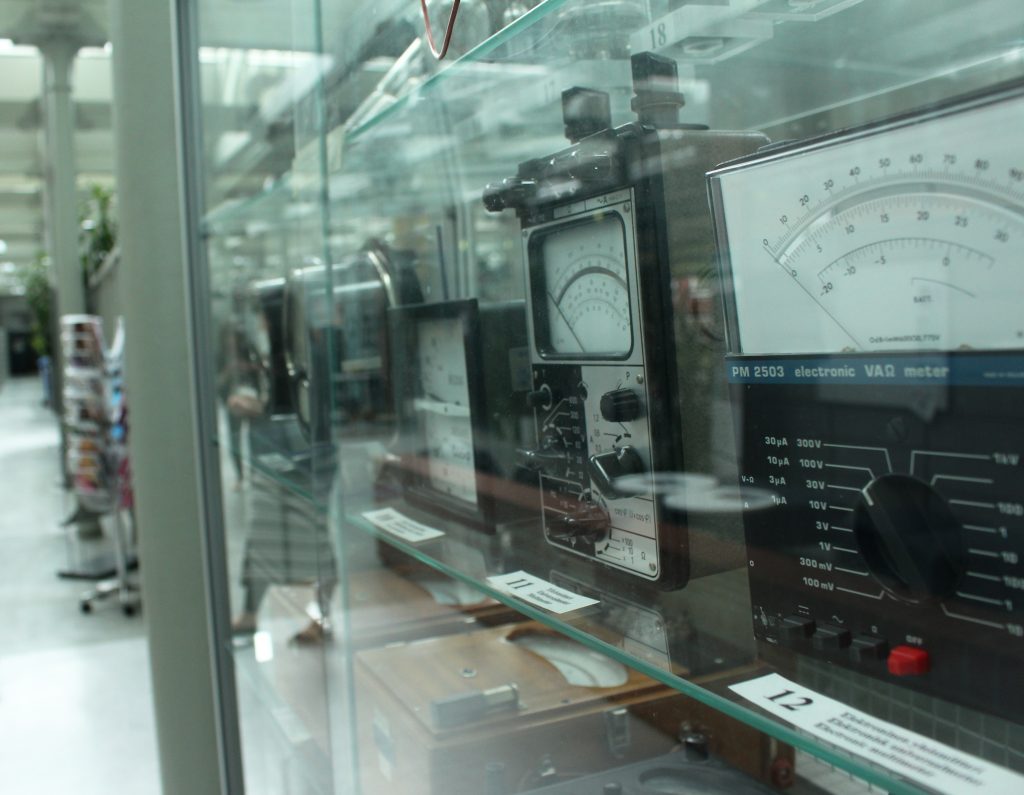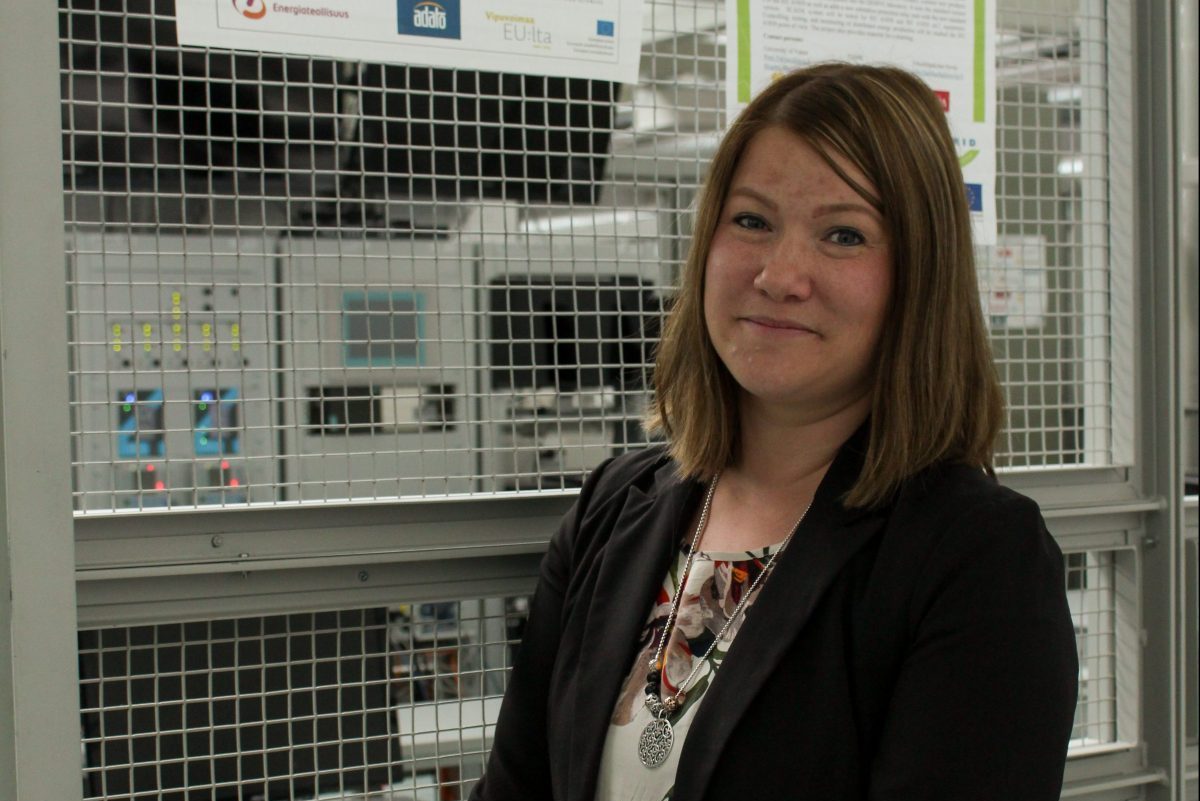Smarting up the electric grid
Digitalization and the various innovative solutions and tools offered by it are part of our lives, whether we notice them or not. However, few of us pause to ponder about how widely-spread the revolution actually is, when we connect our charger to our smartphone or tablet. But even the electricity coming out of the socket has travelled far from the powerlines, and more and more, the journey is a smart one.

In Vaasa’s Technobothnia, the visitor is reminded of lightning, free-flowing energy, and arcs of electricity. Some might even draw the comparison to the famed Doctor Frankenstein, as the Technobothnia education and research center is heavily focused on the study of electricity. The research is not, however, aimed at the creation of new life, but rather the aim is the study of new tools and opportunities brought forth by digitalization.
One of the concrete actions aimed researching and studying the smart electric grids was an ERDF-funded project. This project, called eDEMVE, was realized as a cooperation between three institutes of higher learning: the University of Vaasa, Yrkehögskolan Novia, and the Vaasa University of Applied Sciences. Each of the three institutions have critical knowledge and skills regarding the project. Within the parameters of the project, the functions and capabilities relating to the remote access and operations of the DEMVE laboratory were enhanced and developed further. The laboratory has been focused on researching electricity and the electric grid, and this project freed the personnel from having to be physically present at the laboratory in order to run it.
The cooperation between the three institutes of higher learning is based on their unique areas of expertise which all are linked to the workings of the DEMVE laboratory and the research projects carried through it. The University of Vaasa has focused on the creation and maintenance of the remote access protocols, whereas the Vaasa University of Applied Sciences has taken on the management of the protection relays used in the laboratory. Novia’s expertise is tightly linked to the SCADA (Supervisory Control And Data Acquisition) system that is in place at the DEMVE laboratory.
The eDEMVE-project is part of a continuum that began in 2011 when Merinova, Novia, the University of Vaasa, and the Vaasa University of Applied Sciences participated in a two-stage project. The aim of the project was to develop educational services within the context of power systems in a multi-vendor environment. Multi-vendor environment means that the environment or the situation is such that there are many different vendors who have come together to create a product or a service. Through the projects a laboratory was built into the Technobothnia premises in Vaasa which included three different frames which simulated the electrical station, a frame for surveillance equipment, and a frame for equipment simulating electricity generation.
The programme director for Merinova, Anna-Kaisa Valkama, stresses that in the Vaasa region, conscious decisions about the development of energy technology and the enhancement of the operating conditions and environments for the energy cluster have been made throughout the years. According to her, the DEMVE laboratory aims at answering the needs created by the new applications, such as renewable energy and the proliferation of electric cars, that are being used in the electric grid.
“The different components of the grid have to be able to talk to each even if they are from different manufactures and vendors. The simultaneous ideas for the DEMVE-project came to the dean of UVA’s faculty of technology, Erkki Antila, and to the various corporations operating in the region quite by accident. They all desired a multi-vendor environment where the testing of components originating from different manufacturers could be conducted, and where new professionals could be trained”, Valkama explains.
The capitol of energy
It is not an exaggeration to call Vaasa the energy capitol of Finland, as there are numerous corporations and other entities whose operations are closely linked to electricity and electrical energy. The eDEMVE-project boasts a host of companies and corporations, both national and international, as its partners.
One of these companies is Arcteq Relays Ltd. which, despite its apparent youthful age, has at its disposal a cumulative experience in protection relays of around 250 years through its staff, reveals Robert Olander, the company’s sales and marketing manager. This wealth of knowledge and experience is naturally carried over to the company’s products, that is to say, protection relays that are, according to Olander, comparable to the fuses found in private homes.

“This comparison is, naturally, a huge simplification. Protection relays monitor the transference of electricity within the grid and, if they notice a deviation or any abnormal activity the user can cut off the flow of electricity in the grid, thus protecting it. The decision to cut off the flow is a monumental decision, however”, Olander explains.
Arcteq’s goal is to provide its customers with the most accurate and reliable protection relays which can react to any disturbances within the grid in a fraction of a second. The company has about twenty personnel based in Vaasa and another ten in other countries, on top of which the company is engaged in operations in forty different countries. According to Olander, the company manufactures all of its devices in Finland, and the Vaasa region is perfect for a company working with electricity and electrical power. Worldwide Arcteq’s products are used in various and different environments, ranging from tunnels and ships to mines and port systems.
Through different projects and collaborations, Vaasa now boasts the leading concentration of electrical research and industry in the nation. The region also focuses heavily on the academic research and education relating to the sector, something that according to Olander helps the companies and other entities within the region immensely.
“The skills found in Technobothnia which relate to the area of protection relays are high-grade, and our company takes in students from both the university and the university of applied sciences who are ready to do their thesis work. If anything, we could use more professionals especially now that our company is finished with the R&D cycle, enabling us to focus on new areas”, Olander ponders.
The markets for smart electrical grids are soaring, as the grids enable more efficient and more precise usage of electricity. According to Valkama, the global market for efficient, smart electric grids is growing rapidly. Following this, the knowledge and expertise gained through the DEMVE laboratory and the eDEMVE-project can be used in the future so that the Vaasa region would further enhance its expert knowledge, and know-how in the realms of electrical energy, she expounds.
Thus, it is no exaggeration to call the Vaasa region the leading pioneer in the research of energy in which solutions and innovations to the burning questions and new challenges facing the national energy needs are sought out. According to Olander, the area’s strengths include the close proximity of the different actors and their cutting-edge understanding. In the energy cluster, there exists both partners and clients for Arcteq, says Olander, which makes the area the best in the world for the company and its activities.
Relay engineers are, however, a dying breed whose resuscitation depends on young and skilled people, he continues. The shortage is not limited only to the companies, but is affecting the power stations too. In the future, the relay engineers could take greater advantage of the data that is generated within the grid, Olander continues.
“When talking about electrical relays and this sector, we have to keep in mind that the equipment is totally digital and the amount of data they generate is tremendous. If we could process and refine the data it could bring the different actors dealing with the electrical grids new opportunities and more value which could lead to, for example, the power stations gaining a foothold in new markets. However, the sector is quite conservative in that establishing new connections and modes of operations are not perhaps enticing. This is partly because the probabilities for disruptions are great, and when disruptions occur, immense problem can arise”, Olander says.
Only milliseconds of leeway
Petri Välisuo who is an assistant professor at the University of Vaasa and one the leaders of the eDEMVE-project, says that the generation, distribution, and transfer of electricity are socially critical pieces of infrastructure, vital to the running of a society. Owing to their critical nature, all possible faults, errors, and abnormalities in the systems have to be fixed in a matter of fractions of a second. The standard equipment used within the DEMVE laboratory response time to the potential problems is three milliseconds, which is a shorter time than the space between the beats of a honeybee’s wings.
“By the term ‘critical’ in this context, we mean that the more critical a system or a network is, the more it has protections in place. For example, in some grids and networks we can utilize two ethernet connections both of which are able to operate the system alone, if need be”, Välisuo explains.
Just as there are many support cables on an elevator, each of which can support the weight of the whole elevator and the people or goods in it by themselves in case of an emergency, the multiple ethernet connections can handle the dataflow involved in the operations by themselves in a situation wherein the other connection would be severed.
The safety and stability of the grids and networks is of paramount importance for the companies and industrial actors. The decision to stop the flow of electricity in a grid can cause massive financial losses and at times, the delay in services. For this reason, the equipment measuring the grids have to be incredibly exact. When talking about protection relays, the timeframes are tiny, fractions of a second.
Arcteq possesses a good chance of becoming one of the leading protection relay company in the world, according to Olander, specifically thanks to the precision of the equipment it has on the maker. He lists the conservatism of the sector as one of the biggest challenges in the near-future, in addition to the sectors fierce competition. Arcteq made it to the market in less than five years, focusing on the Finnish and Swedish markets. The company’s product portfolio includes, on top of the protection relays, equipment focused on data collection which can enhance the intelligence and fluidity of the electrical grids
Olander says that the various entities engaged in the business of electrical grids could make use of the data coming in from their equipment. These new opportunities include, for example, quality assurance, more detailed user data, and more specific information about the performance of the grid in question.
As the production and transfer of electricity are functions critical to the workings of a society, questions of security and potential threats are being taken very seriously by Arcteq, assures Olander. However, it is largely up to the clients themselves to decide how to solve the issues surrounding security, he adds.[:]